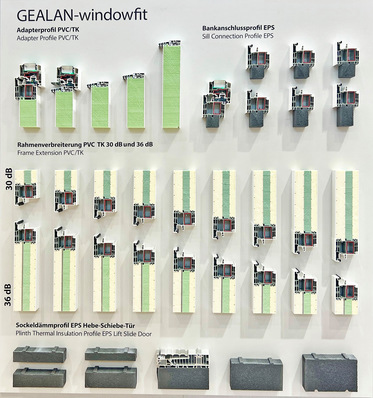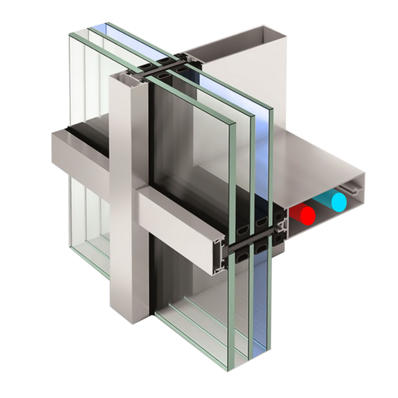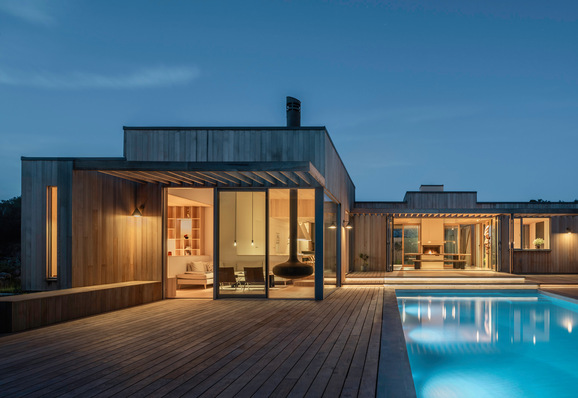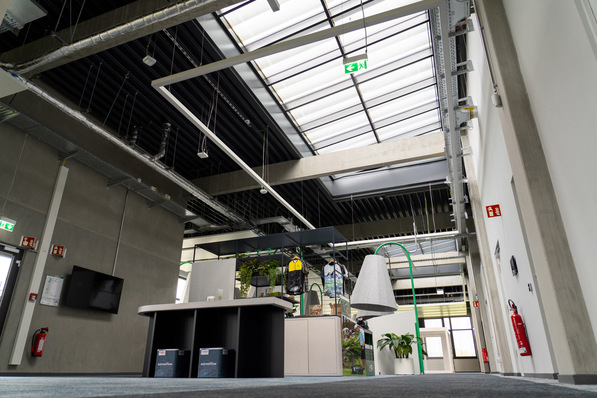Click here for the first part of this series on building-integrated photovoltaics (BIPV).
There are two substantial design options for crystalline PV cells at module level: the deliberate use of the cells as basic elements of patterns, and the use of colour to make the cells invisible. Both options are available for architects to either highlight the use of renewable technologies or blend the technology with the overall building and environment.
There is a wide choice of solar building envelopes: whether semi-transparent modules with visible silicon solar cells (such as Design2PV modules), non-transparent ones with visible cells (BIPV modules in the ventilated area of the facade, among others) or opaque ones in different colours (for example MorphoColor modules). At Fraunhofer ISE, the focus is currently on the latter, the coloured modules. The researchers have already built operational BIPV prototypes with variable cell and module formats as well as diverse design options.

Johannes Kimmerle
Electrical system design and design options
Conventional PV systems - roof-mounted or ground-mounted - are typically designed for maximum electrical output at minimum cost. In contrast, BIPV systems must fit into the geometry, design and structure of an existing or specially designed building. Many BIPV modules may therefore require different module sizes for the given architectural design. Also, the modules are always subject to shading from neighbouring buildings or other parts of the building. For these reasons, there is no universally applicable BIPV module that meets all technical and aesthetic requirements. There are different module solutions and different electrical designs of BIPV systems.
[KAOSS - Kinetic Adaptive Origami Sun Shade]
Basically, there are design options at the submodule level, the module level, the BIPV system level and the building level. At the submodule level, the most important component is the PV cell. There are various cell technologies available on the market: crystalline silicon solar cells, mono- or polycrystalline, dominate. As glass-foil or glass-glass modules, they offer easily manageable long-lasting elements; for the glass industry, this offers a great economic opportunity. In addition to crystalline BIPV, there are also thin-film technologies such as CIGS.
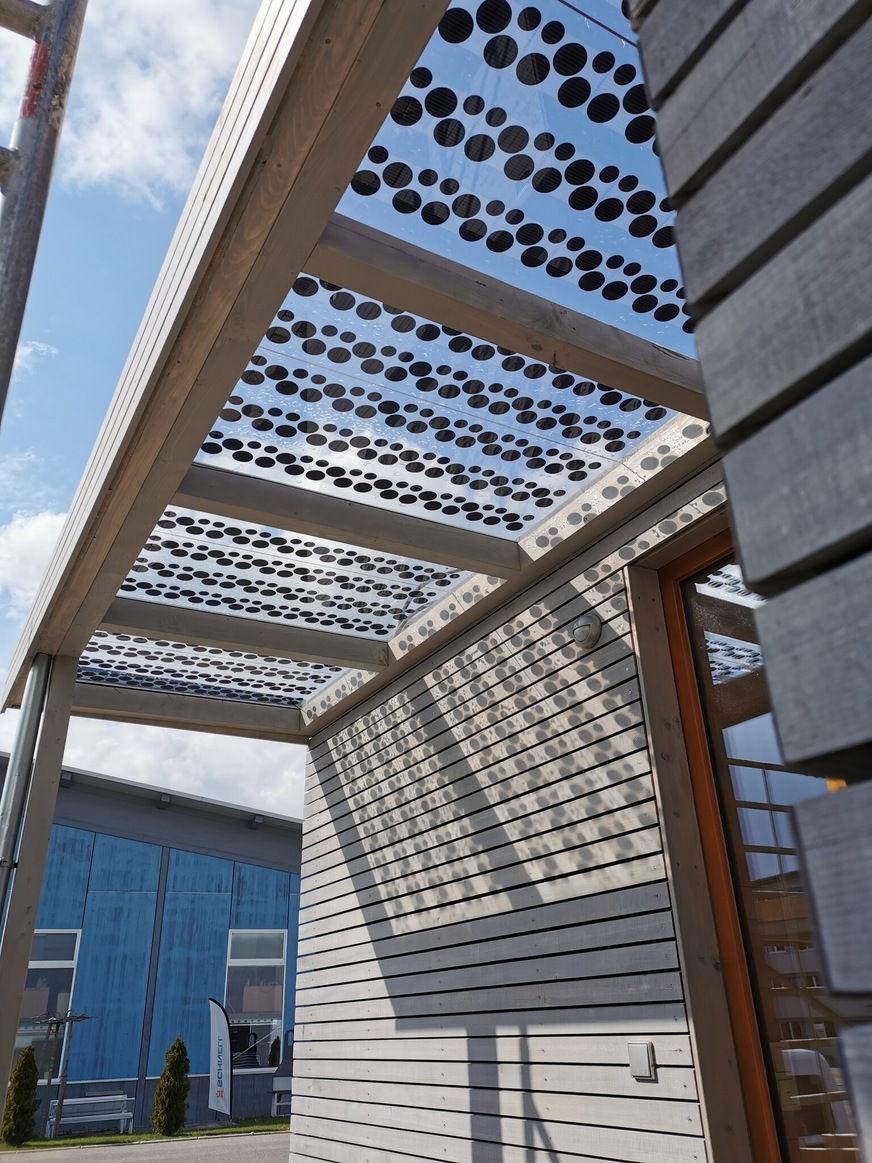
Johannes Kimmerle
Crystalline solar cells currently offer the greatest advantages for BIPV applications, especially due to their long lifetime and because they benefit from a mass PV market with price pressure, availability and rapid technological advances. This can be transferred to the BIPV market. In addition to the choice of solar cells, one can choose the number of cells in horizontal and vertical direction within a module, the distances between adjacent cells and between cells and glass edges, the orientation of the cells (e.g. parallel, perpendicular or rotated to the glass edge) and the cell connection technology. The following illustration shows module prototypes currently in research and development with particularly wide design scope.
As with cells, power electronic components can also be useful at module level when designing and optimising the complete BIPV system. Among other things, MPP tracking must be carried out. Here, the electrical load of a solar cell, a solar module or several solar modules connected in series is adjusted so that the greatest possible output is extracted from the cells.
Choosing an inverter for BIPV systems is non-trivial
The inverter, which controls and operates the electrical system as a central component, must be selected with particular care. Some cell and module technologies require inverters with a transformer to ensure galvanic isolation between DC and AC circuits or to avoid efficiency degradation due to potential induced degradation (PID). However, most modules available on the market today can be operated with transformerless inverters, which are usually smaller and more efficient. The choice of an inverter with suitable electrical parameters is also crucial, especially considering that BIPV systems often operate under poor lighting conditions or higher temperatures. Therefore, correspondingly low starting voltages and not too high nominal power ratings are important.

Guido Kirsch / Fraunhofer ISE
It should also be considered: increasingly, BIPV systems form an important part of building energy systems. As far as self-consumption is concerned, the electrical design of BIPV systems must take into account the electricity consumption in the building and possible storage capacities. This can help to better match supply and demand. At the building level, it is possible to install a battery, integrate electric vehicles into the system and introduce and control large electrical loads such as heat pumps. As there are interdependencies between BIPV, batteries, heat pumps and other electrical loads, the system and the size of its components should be optimised holistically.
Constructive integration into the building envelope
An important aspect is also the constructive integration of BIPV modules into the building envelope, including the positioning of the modules and their mounting. This also includes the cabling and electronic components such as junction boxes or optimisers mounted on each module. This can have particular implications for the mounting structures, aesthetics and safety of the installation.
[A sustainable office building inspired by nature]
There are no longer any fundamental difficulties in this area; the required systems are available on the market. For all installation categories, there are various solutions for dealing with these additional electrical components, which can be selected or adapted for the specific situation. What is desirable here, however, is a standardisation of the fastening solutions. In addition, the more detailed the technical regulations are implemented in a given country, the less personal responsibility and design freedom planners, product manufacturers and construction companies have. This inhibits the BIPV market.











